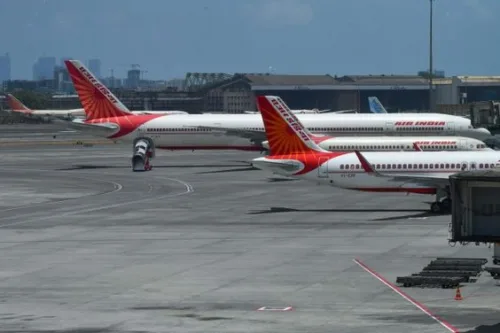It has been two years since the Tata Group acquired Air India, and we are still waiting for the transformation we expected. This comes at a crucial time as Air India faces increasing scrutiny over the quality of its aircraft, especially in economy class. From broken seats to non-functional in-flight entertainment systems, the airline’s challenges are evident. However, the Tata Group’s commitment to elevating Air India’s status as a premium carrier is set to change this market.
The Tata Group’s Strategy: Revitalising Air India
Upon taking control, the Tata Group discovered numerous Air India planes grounded due to maintenance issues, primarily stemming from financial constraints. As funds were injected, the focus was on restoring operations, increasing frequency, and launching new routes, like the Mumbai to Melbourne service. Despite these efforts, problems with the ageing seats and in-flight entertainment persisted due to supply chain issues and out-of-date parts.
A New Era for Air India
In a significant move, the Tata Group announced a US $400 million investment to refurbish Air India’s 43 widebody aircraft, comprising 27 B787s and 16 B777s. Slated to begin in mid-2024, this refurbishment will include new seats, state-of-the-art in-flight entertainment systems, and Wi-Fi connectivity.
By the end of 2025, the fleet is expected to be complete, with a significant portion of the fleet upgraded by March 2024. This includes six A350s and several B777s acquired from Etihad and Singapore Airlines.
The Current Challenges and Solutions
However, the path to transformation is not without its set of challenges. The Tata Group faces immediate challenges, such as ensuring cleanliness and addressing broken amenities on current flights. A possible solution could be to mark malfunctioning seats as inoperative, although this could affect route viability. The Tata Group is tasked with implementing effective strategies to maintain cleaner aircraft, a fundamental expectation for any world-class airline.
Air India’s Premium Ambitions
The transformation plan is not just about fixing the old but reimagining its service. The B777-300ERs, crucial for long-haul North American routes, will undergo significant changes. The introduction of premium economy, a revamped business class with privacy doors, and a redesigned economy class aim to elevate the passenger experience.
The Tata Group’s vision is to eliminate the middle seat in premium cabins, enhancing comfort and privacy. The new layout, however, might reduce the seat width slightly in the economy class, a trade-off for the added premium sections.
Conclusion
The Tata Group’s ambitious plans for Air India symbolize a new chapter in the airline’s history. While challenges in cleanliness and current hardware issues persist, the group’s commitment to a $400 million investment speaks volumes about its intent to transform Air India into a premium carrier. The journey towards this transformation will be closely watched, as the Tata Group aims to balance immediate operational challenges with long-term strategic goals, ultimately redefining Air India’s position in the global aviation market.




The articles you write help me a lot and I like the topic